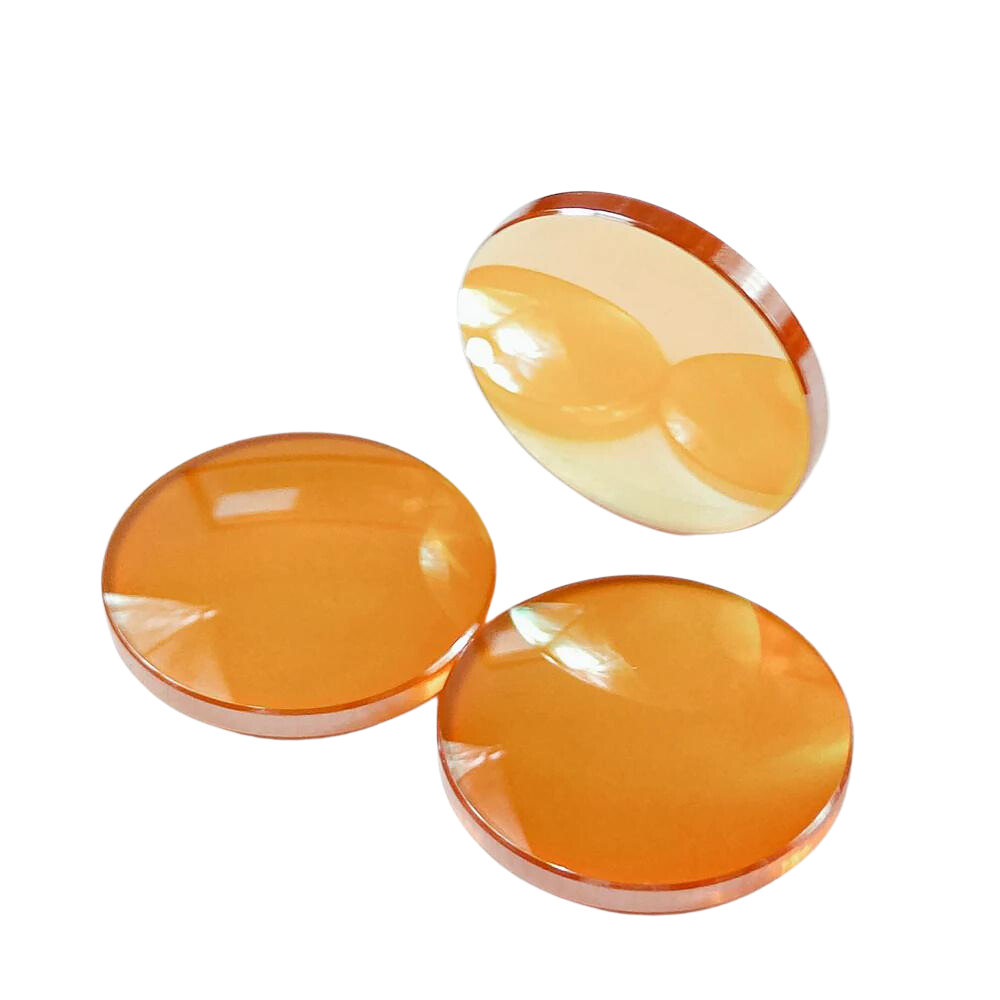Optical Lenses
Optical lenses are components that focus or disperse a light beam toward or away from specific targets. Lenses are made from materials that are transparent across specific wavelength ranges depending on the application. Optical lenses can be crafted with various properties such as Plano-Convex or Bi-Convex, which focuses light on a point while Plano-Concave and Double-Concave diverges the light beams.
Aspheric lenses contain at least one surface that is neither cylindrical or spherical and are used to correct spherical aberration while chromatic lenses are used to correct color/chromatic aberrations.
Firebird also offers a number of custom lenses such as ball lenses, fresnel lenses, laser lenses and more.
Reach out to us at info@firebirdoptics.com for more information.
Zinc Selenide (ZnSe) Plano-Convex (PCX) Lenses
Zinc Selenide (ZnSe) Plano-Convex (PCX) Lenses
Firebird Optics’ plano-convex ZnSe lenses are the primary way to focus parallel rays of IR radiation into a single point. These types of lenses are also referred to as positive or converging lenses.
Firebird provides a range of sizes and shapes both coated and uncoated though if you do not see your desired zinc selenide lens please contact us and we can quote for a custom lens.
What you get with a Firebird Optics ZnSe Plano-Convex Lens
Each lens goes through a thorough inspection process before leaving our factory.
Diameters ranging from 25.4-50.8mm and additional options upon request.
Effective Focal Lengths (EFL) range from 25.4-200mm.
Additional optical coatings available upon request.
Specs:
Lens shape: plano-convex
Surface quality: 60-40 scratch-dig
Surface flatness: λ/8
Surface accuracy: 1.5 λ
Chamfers Angle/Tolerance: 45° ±15°
Clear aperture: ≥central 90% of surface area
Zinc Selenide Plano-Convex Lenses: A Comparative Analysis of Advantages, Disadvantages, and Applications in Infrared Optics
Zinc selenide (ZnSe) plano-convex lenses are essential optical components renowned for their excellent transmission properties in the infrared wavelength range. As a versatile material, ZnSe is well-suited for numerous applications in both infrared and visible light domains. In this article, we will conduct a comparative analysis of zinc selenide plano-convex lenses, highlighting their unique advantages and disadvantages when compared to other infrared materials. Additionally, we will explore their diverse applications in infrared optics.
Advantages of Zinc Selenide Plano-Convex Lenses
Broad Infrared Transparency: One of the standout advantages of zinc selenide plano-convex lenses is their impressive infrared transparency. ZnSe lenses offer a wide transmission range, spanning from approximately 0.6 µm to 20 µm, covering the near-infrared, mid-infrared, and far-infrared regions. This extensive transmission range allows for versatile applications in infrared optics.
High Optical Quality: ZnSe is recognized for its high optical quality, characterized by low scatter and absorption properties. Plano-convex lenses made from zinc selenide provide excellent clarity and minimal light loss, ensuring superior performance in imaging and laser applications.
Low Dispersion: Zinc selenide exhibits low dispersion characteristics, effectively minimizing chromatic aberrations in optical systems. This feature results in improved image quality and reduced color fringing, particularly beneficial for broadband infrared applications.
Chemical Stability: With its chemical stability, zinc selenide lenses do not degrade under typical environmental conditions. This ensures the longevity and reliability of ZnSe plano-convex lenses, even in demanding operating environments.
Ease of Fabrication: Zinc selenide is relatively easy to fabricate into optical components, including plano-convex lenses. This advantage streamlines the manufacturing process and reduces production costs.
Disadvantages of Zinc Selenide Plano-Convex Lenses
Brittleness: A notable drawback of zinc selenide lenses is their relative brittleness, making them susceptible to mechanical damage if not handled or mounted with care. This limitation necessitates cautious handling during assembly and use.
Comparative Analysis to Other IR Materials
Germanium (Ge): Compared to germanium, zinc selenide lenses offer a broader infrared transparency range, as germanium primarily operates in the 2 µm to 16 µm region. However, germanium lenses have the advantage of lower cost and higher thermal conductivity, making them suitable for high-power laser applications.
Silicon (Si): In contrast to silicon, zinc selenide lenses have superior infrared transmission capabilities, especially in the mid-infrared range. Silicon lenses are commonly used for visible and near-infrared applications but have limited transparency in the longer infrared wavelengths.
Zinc Sulfide (ZnS): Zinc selenide and zinc sulfide are often compared due to their similar properties. While ZnS has slightly higher transmission in the mid-wavelength infrared (3 µm to 5 µm), ZnSe outperforms ZnS in the long-wavelength infrared (8 µm to 14 µm) range.
Applications of Zinc Selenide Plano-Convex Lenses
Infrared Imaging: Zinc selenide plano-convex lenses find extensive use in infrared imaging systems, such as thermal cameras and night vision devices, thanks to their broad infrared transparency and low dispersion characteristics.
Laser Systems: With high optical quality and infrared transparency, ZnSe plano-convex lenses are essential components in laser systems, enabling precise and efficient laser beam focusing for cutting, material processing, and medical applications.
IR Spectroscopy: Infrared spectroscopy applications, involving the study of molecular vibrations, heavily rely on zinc selenide lenses for manipulating and focusing infrared radiation in the mid-infrared range.
CO2 Laser Optics: Zinc selenide lenses are commonly used in CO2 laser systems due to their excellent transmission in the mid-infrared spectrum, matching the emission wavelength of CO2 lasers.
Thermal Imaging in R&D: In research and development (R&D) applications, zinc selenide plano-convex lenses play a vital role in thermal imaging and infrared sensing, providing valuable data for scientific studies.






